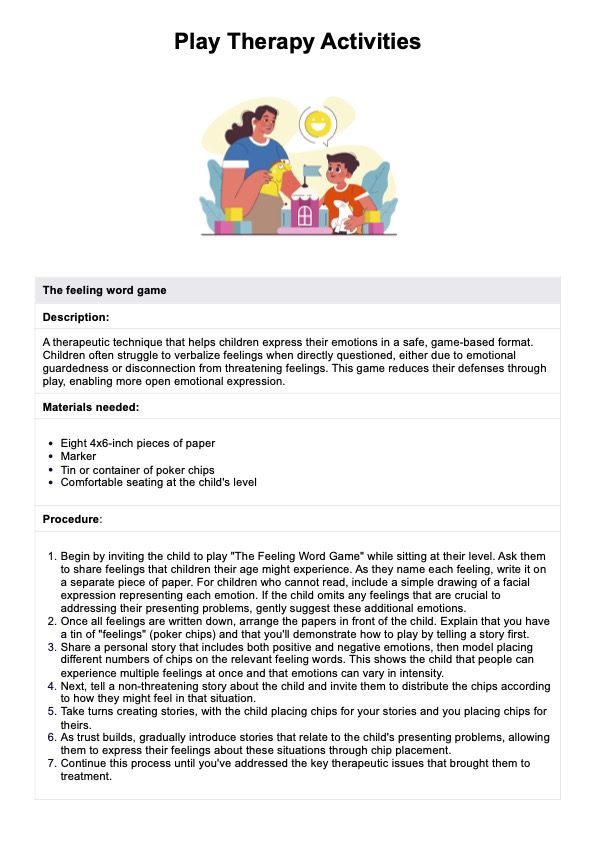Play therapy offers a safe space for children to express their emotions through play. Therapists provide toys and activities, observe the child's play, and foster emotional expression and healing.

Play Therapy Activities PDF
Download our Play Therapy Activities PDF as a helpful reference tool in your play therapy sessions.
Play Therapy Activities PDF Template
Commonly asked questions
There are several types of play therapy, including directive play therapy, where the therapist leads the session and guides the child in specific activities; non-directive play therapy, which allows the child to lead and express themselves freely through play; cognitive-behavioral play therapy, which integrates cognitive-behavioral techniques to address specific issues; and filial therapy, which involves training parents to use play techniques with their children to enhance their relationship and communication.
An example of a play-based intervention is sand tray therapy, where children use miniature figures and objects in a sandbox to create scenes that represent their thoughts, feelings, and experiences. This intervention allows children to express complex emotions and narratives non-verbally, providing insights into their inner world while promoting healing and self-discovery through creative expression.
EHR and practice management software
Get started for free
*No credit card required
Free
$0/usd
Unlimited clients
Telehealth
1GB of storage
Client portal text
Automated billing and online payments











